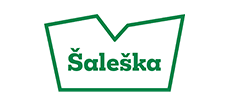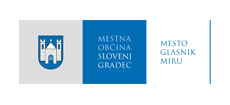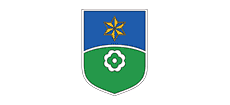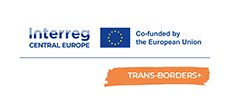Štrekna:
From old railway tracks
to new cycling adventures!
Štrekna is a senic 35 km long cycling route, laid out along the abandoned railway line (“štreka”) that once connected Velenje with Dravograd.

35 km of pure
cycling pleasure

Separate from traffic
and fully paved

Free bicycle transport
along the entire route

Perfect for families
and nature lovers
About Štrekna
Štrekna is a senic 35 km long cycling route, laid out along the abandoned railway line (“štreka”) that once connected Velenje with Dravograd. It is one of the best-developed cycling routes of its kind in Slovenia, offering stunning views of the Pohorje Hills and Mount Uršlja, along with the unique experience of riding through the Huda Luknja gorge.
Why choose Štrekna?

Tarmacked for its entire length of 35 km from Velenje to Dravograd, the path is furnished with uniform signage and separated from the rest of the traffic. Cyclists and other travellers can take a break at any of the several stops with amenities that are set up along the path. The slight but constant uphill gradient makes it family and senior friendly. The path elevates from 411 metres at Velenje to the highest point of 590 metres in Mislinja before it descends to Dravograd at 341 metres.
Štrekna bus

Free bicycles transport is provided by the ŠTREKNA BUS. Bus operates on Saturdays and Sundays in September between 6th and 28th of September 2025. You can find it on the route between Velenje and Dravograd, all the way to the swimming lake in Labot (Lavamünd) on the Austrian side.

30
seats
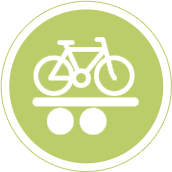
Trailer for
16 bicycles

Free bicycle
transport
Along the route
Let your energy be fueled by traditional dishes and local specialties from the Koroška and Šaleška regions. Enhance your experience with the hospitality of the locals. Discover the range of Inns, accommodations, and attractions along the way. Along the cycle path Štrekna, you’ll never be bored!
Offers Along the Route
Explore Koroška, a treasure trove of surprises, and Šaleška – the valley of many adventures!
Discover the offerFrequently Asked Questions
Where can I find the Štrekna Bus timetable?
The timetable for the Štrekna Bus is published on the website www.strekna.si - just click the orange button labeled “Štrekna bus.” Printed timetables are also available at all bus stations and stops where possible. The website also provides a link to the cycling bus timetable, which allows transfers in Labot (Lavamünd, AT) and travel towards Wolfsberg (Volšperk, AT).
How much does a ticket cost and where can I buy it?
Štrekna Bus is part of the public intercity bus service, so standard ticket prices apply. You can find ticket prices on the website of the transport operator Nomago: https://www.nomago.si/vozovnice. With subsidized weekend fares, a single ticket for all routes costs €1.30. Bicycle transport is free this year as well. Tickets can be purchased directly on the bus, at bus stations in Velenje and Slovenj Gradec, or online via the transport operator’s website.
Are reservations possible?
Unfortunately, the public bus passenger transport system does not allow reservations. There is no reservation system for regular bus routes operated by Nomago, so passengers who purchase a ticket in advance do not have a reservation at the same time. Public transport is intended for all passengers without reservations and operates until all seats on the buses are filled, via all stops.
What should I do if the bus is delayed?
We recommend first checking announcements on Štrekna’s social media or website, where updates about possible service disruptions are posted. Under normal conditions, the bus runs according to the scheduled timetable, but minor delays may occur due to road conditions. It is advisable to arrive at the stop at least 15 minutes before the scheduled departure to allow for bicycle loading and unloading.
Can I ride the Štrekna Bus without a bicycle?
The Štrekna Bus is available to all users, including those without bicycle.
Where can I park along the route?
The Štrekna cycling route mostly runs separately from main roads, but parking is available near all bus stops where bicycle loading is possible. Larger parking lots and garages are marked on the map on the website.
At which stops can I load my bike?
For safety reasons, bike loading is planned and recommended at the following stops:
- Velenjsko jezero (postajališče Novi jašek)
- AP Velenje
- Gornji Dolič
- Mislinja
- Slovenj Gradec
- Otiški Vrh
- Begant
- Dravograd
- Labot – jezero (Lavamünd Badesee)
At the Gornji Dolič and Begant stops, bike loading is only possible at the stop in front of the inn (on the right side heading toward Slovenj Gradec).
Can my e-bike be loaded onto the bike trailer?
Both regular and electric bikes can be loaded onto the trailer.
Are there any works on the route?
For current updates, follow announcements on social media.
Is it possible to rent a bike?
Bikes can be rented at several locations along the route. Prior reservation is recommended. Locations and contacts are listed on the website. The Štrekna Bus offers transport only and does not provide bike rental.
What should I do on sections without a dedicated cycling path?
On the temporary bridge in Šentjanž, built after the floods, cycling takes place on the road surface. Be especially careful. We also recommend caution when riding through the roundabout and over the Kovtrov Bridge in Dravograd.
What do I need to know about crossing the border between Slovenia and Austria?
You must carry a valid ID document when cycling or driving across the state border. Follow current instructions on the Slovenian Government website. The Štrekna Bus currently runs all the way to Labot (Lavamünd) in Austria.
Do bikes need to be equipped with lights?
Bikes must be equipped in accordance with the regulations of the Slovenian Traffic Safety Agency. More information is available on the website - https://www.avp-rs.si/preventiva/preventivne-akcije/varnost-kolesarjev/varno-kolo/
Where can I find the map of Štrekna route?
The cycling route is shown on the map on the homepage of the website, where you can also explore the surrounding area and providers along the route. A GPX file of the route is also available for download here:
What if my bike breaks down?
There are several bike repair shops near the route, shown on the website’s map. Some locations also have repair stations with basic tools for minor fixes.
I’m planning a multi-day cycling trip – where can I stay overnight?
Recommendations for accommodations and additional experiences are published on the website’s map or on the »Providers« subpage.
Partners
In 2025, the Štrekna Bus service is being upgraded as part of a pilot activity within the TRANS-BORDERS+ project, which is part of the Interreg Central Europe program. Based on challenges identified in previous years, the project platform offers an opportunity for enhancement in line with modern standards and a more suitable scope of operation. With more operating days and an improved bicycle transport system, this popular cross-border service will be able to offer a better (cross-border) user experience, meet increased demand, and respond to the new reality of the Štrekna cycling route and the region, which annually attracts over 100,000 cyclists.
The upgrade is the result of strong cooperation among numerous stakeholders: RRA Koroška, VKG (AT), AKL (AT) as project partners, the Ministry of Environment, Climate and Energy, the Ministry of Infrastructure, the Municipality of Dravograd, the Municipality of Mislinja, the City Municipality of Slovenj Gradec, and the City Municipality of Velenje. The transport operator is the company Nomago d.o.o.
In the expanded partnership, we aim to build on the successful story of the original TRANS-BORDERS project and continue efforts to improve cross-border public passenger transport between multimodal hubs in the Slovenia-Austria border area. As part of the planned service upgrades within the Interreg Joint Pilot Project (JPP), new open-source digital information systems developed during the project will also be piloted and tested.
The project brings together partners from two border regions striving for better connectivity of border areas: one linking Germany, the Czech Republic, and Poland; the other connecting Austria, Slovenia, and Italy.




